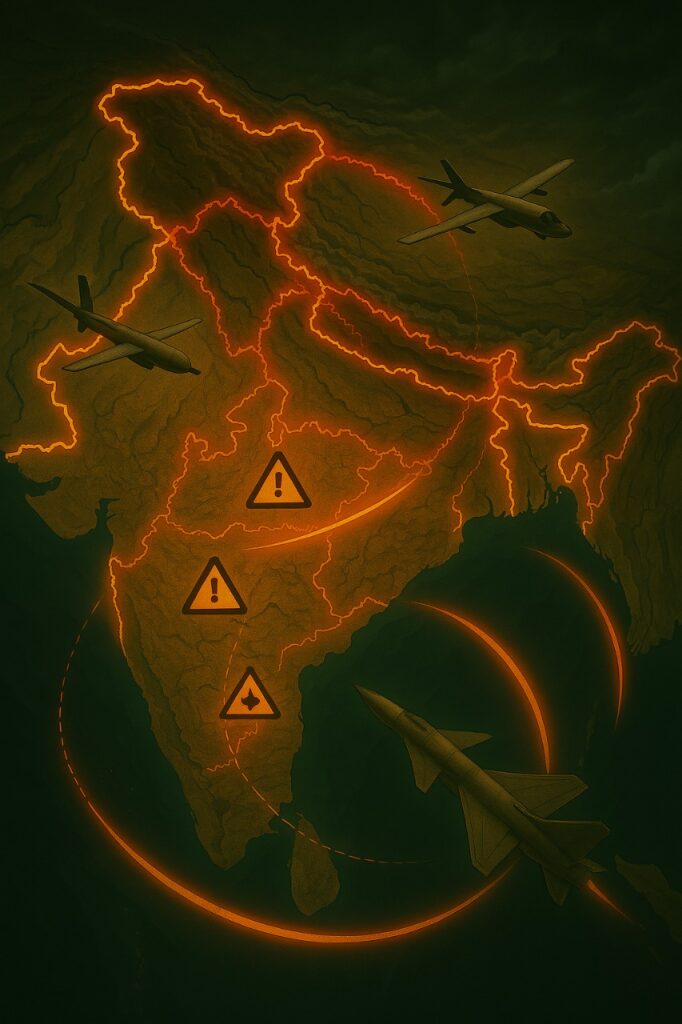The volatile relationship between India and its neighbors, particularly Pakistan and China, has long shaped South Asia’s military landscape. The region remains one of the most densely militarized and nuclear-capable in the world. As geopolitical tensions intensify, especially with frequent ceasefire violations, terrorism, and power contests, cross-border military tactics are evolving rapidly. For India, the future of these tactics lies not just in muscle-flexing but in smart, precise, and hybrid strategies that integrate technological superiority with strategic restraint.
The Historical Context: India’s Cross-Border Tactics So Far
The Evolution of Doctrine
India’s cross-border military doctrine has undergone significant transformations since independence. Key turning points include:
- 1971 Indo-Pak War: Traditional warfare with clear territorial goals.
- Kargil Conflict (1999): High-altitude warfare and the need for real-time intelligence.
- Surgical Strikes (2016): First acknowledged cross-border raid post Uri attacks.
- Balakot Airstrikes (2019): Aerial precision targeting of terror camps deep inside Pakistani territory.
Doctrinal Shifts
These actions highlight a shift from passive defense to proactive deterrence, a principle enshrined in the Cold Start Doctrine (CSD) and Limited War Doctrine, focused on swift, localized military responses without escalating into full-blown wars.
Emerging Threats and Tactics in the South Asian Arena

Hybrid Warfare
Hybrid threats — a mix of cyberattacks, psychological warfare, disinformation, and non-state terrorism — are now at the forefront. India’s military must prepare for:
- Cyberattacks on defense systems.
- Drone warfare across borders.
- Information warfare and propaganda via social media.
Non-State Actors
The persistence of terrorism and cross-border infiltration, particularly from Pakistan, necessitates non-conventional counterinsurgency tactics. India’s strategic approach has to blend military, diplomatic, and cyber capabilities to neutralize these actors.
Dual-Front Threat: Pakistan and China
India faces the unique challenge of a two-front conflict. With China expanding military infrastructure along the LAC and Pakistan supporting proxy warfare, India’s tactics must be dynamic and scalable.
The Role of Technology in Future Tactics
Artificial Intelligence and Big Data
Predictive analytics, satellite imagery, and AI-powered surveillance are redefining how India detects and responds to threats.
- Facial recognition at borders.
- AI-enabled drones for reconnaissance.
- Big data for mapping terror networks.
Cyber Warfare Capabilities
India’s defence establishment, through agencies like CERT-IN and the Defence Cyber Agency (DCyA), is enhancing its ability to:
- Defend critical infrastructure.
- Launch pre-emptive cyberstrikes.
- Counter psychological operations from adversaries.
Space and Satellite Tech
India’s space capabilities (e.g., RISAT satellites) aid real-time intelligence gathering and border monitoring. The use of low-orbit micro-satellites and anti-satellite (ASAT) weapons will likely increase.
Precision and Deterrence: The Next Level
Standoff Weapons and Smart Bombs
Future military operations will focus on non-contact warfare using:
- Standoff cruise missiles like BrahMos.
- Precision-guided munitions.
- Air-dropped loitering munitions.
Special Operations Forces (SOFs)
The future will see increased deployment of elite units like MARCOS, NSG, and Para SF in:
- Cross-border sabotage missions.
- High-value target eliminations.
- Hostage rescue operations.
Doctrinal and Strategic Upgrades
Cold Start Doctrine 2.0
India is refining CSD to allow quick mobilization without triggering nuclear thresholds, focusing on:
- Rapid deployment units.
- Integrated battle groups (IBGs).
- Coordinated cyber-electronic warfare.
Theatre Command Structures
India’s push towards integrated theatre commands will improve coordination among Army, Navy, and Air Force.
- Eastern Command (China).
- Northern Command (Pakistan).
- Cyber and Space Commands.
Diplomatic and Strategic Restraint
Avoiding Escalation
Even as military tactics become sharper, India’s policy aims to avoid full-scale war through:
- Strategic messaging.
- Back-channel diplomacy.
- Pressure through multilateral platforms (e.g., UN, SCO, BRICS).
Legal and Moral High Ground
India consistently uses global platforms to highlight its stance against terrorism and to showcase restraint in the face of provocation.
Future Scenarios: What Could Happen?
1. High-Tech Skirmishes
Small, localized battles dominated by drones, AI systems, and cyber tools, with minimal boots on the ground.
2. Proxy Conflict Escalation
Terrorist provocations leading to targeted cross-border raids or airstrikes, under the umbrella of precision warfare.
3. Two-Front Limited War
Simultaneous pressure from Pakistan and China triggering a brief but intense border conflict requiring multi-domain coordination.
4. Cyber Blitzkrieg
Massive digital disruption of communications, banking, and transport networks.
Recommendations for India
- Enhance Intelligence Sharing with allies.
- Accelerate Defence Modernisation through indigenisation (Make in India, DRDO).
- Strengthen Civil-Military Synergy in handling hybrid threats.
- Invest in Quantum Technology for secure communication.
- Develop Rapid Reaction Forces for localized conflicts.
Conclusion
The future of cross-border military tactics in South Asia will be shaped by technology, doctrine, and diplomacy. For India, the goal is to build a military posture that is fast, flexible, and formidable—capable of responding to threats without spiraling into all-out war. As India asserts itself on the global stage, a nuanced and modernized approach to border conflicts will ensure security, stability, and sovereignty.
Author’s Note: This article is written with a focus on the Indian strategic viewpoint and aims to provide an informed, research-backed perspective for readers interested in defense, geopolitics, and future warfare trends in South Asia.









+ There are no comments
Add yours